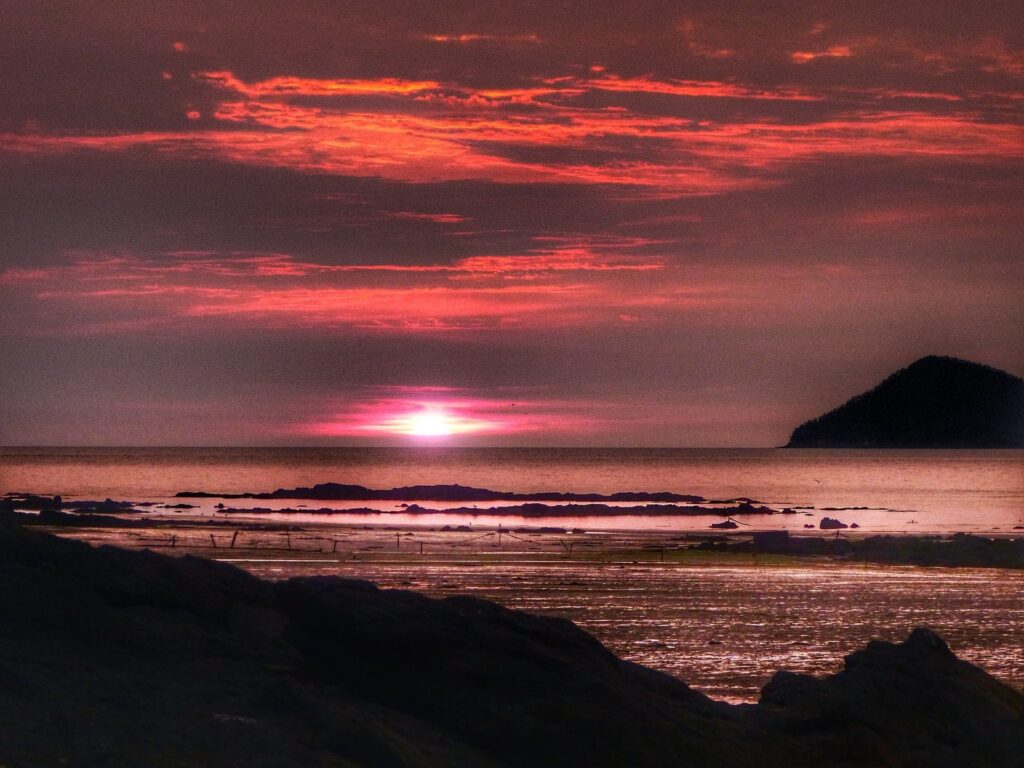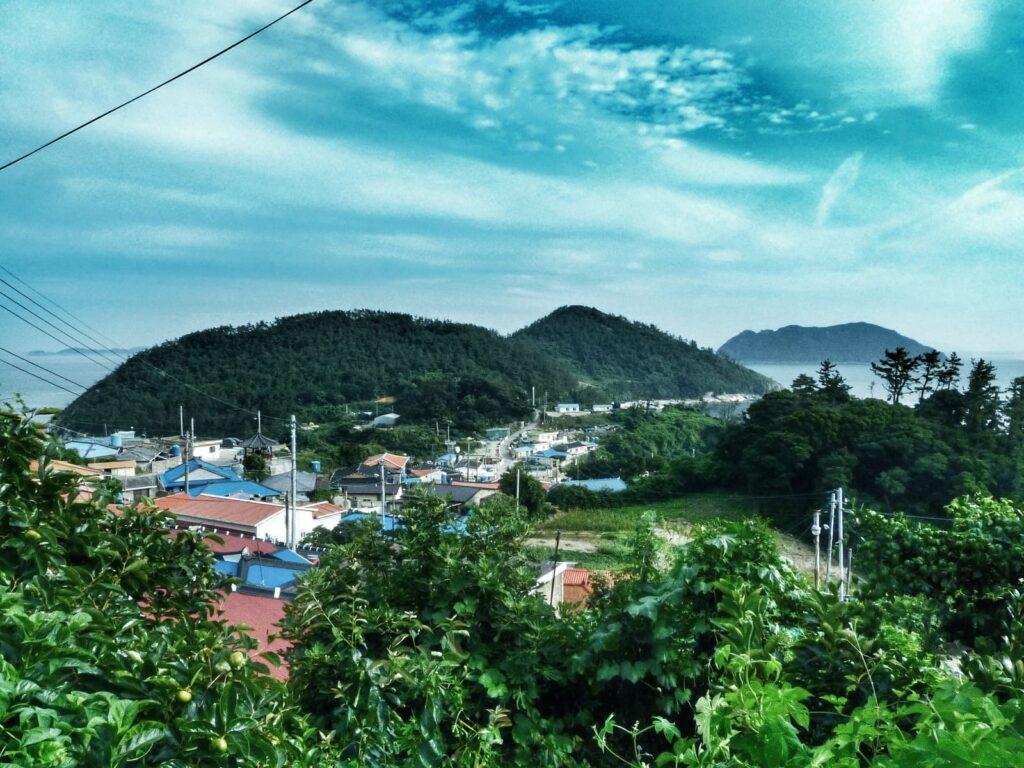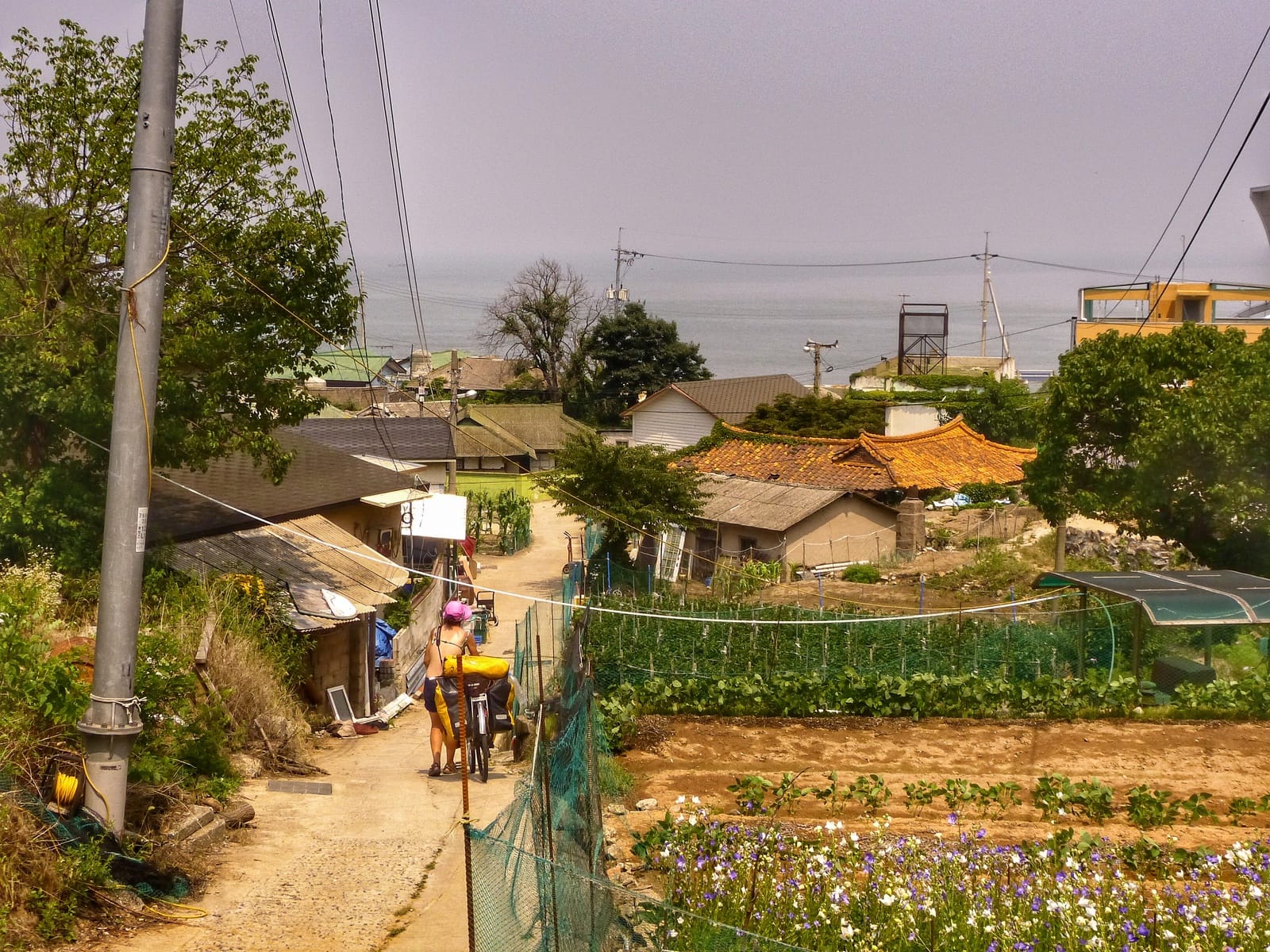Bicycle Touring Korea – Our Route in South Korea
This is the itinerary and blog of our bike trip in South Korea, it’s about 1700km long and we did it in approximately 2 months, including a one-week stop in Seoul and an 8-day one in Busan. We also took several rest days and sometimes cycled less than 40km in one day.
The long visa allowance and small territory really make Korea an ideal destination for a leisure bike touring trip, that’s if you have enough time of course. We visited many islands and some were the highlights of our journey.
We feel like recommending this itinerary to those who are interested in exploring the most hidden sides of South Korea, while experiencing the real culture of this amazing country.

> Route: Bikepacking South Korea – Full Coastal Route w. GPS Itinerary
> Information: Cycling Korea – All about South Korea by Bike
1. Starting the bike trip in Incheon

Incheon is South Korea’s third most populous city, following Seoul and Busan, with a population of around 3 million. It’s part of the Seoul Capital Area, one of the largest metropolitan regions in the world, with over 25 million people.
For cyclists exploring South Korea, Incheon is a common starting or ending point, thanks to its status as a major international airport and crucial seaport.
The city itself is intriguing, with its hills and charming neighborhoods, but the nearby islands are particularly delightful for cycling.
2. Cycling the islands of Yeongjongdo, Muui-do, and Somuui-do

Out of South Korea’s 3,358 islands, 100 are in the Incheon area. We explored three notable ones: Yeongjong-do, Muui-do, and Somuui-do.
Yeongjong-do, home to the airport, is large and mostly unpopulated, featuring wide streets, new traffic lights, and an excellent bike path. At low tide, the retreating sea reveals a mudflat rich with birds, offering unique birdwatching opportunities. The impressive Incheon Bridge is a highlight, though cycling across it is not permitted.
Muui-do is a small, mountainous island with lush forests and cicadas. Its tiny village and scenic Hanaggae Beach make it a standout spot.
Somuui-do, connected to Muui-do by a pedestrian bridge, is even smaller. It has a quaint village by the harbor and a lovely pebble beach on the other side.
3. Cycling through Seoul

Seoul quickly became one of our favorite cities in Asia. Its vastness and diversity offer countless experiences and activities. We dedicated a full week to exploring Seoul, cycling through its bustling streets and taking leisurely walks through its varied neighborhoods.
The city is notably cycle-friendly, especially with the extensive bike path running along the Han River. This scenic route provides a fantastic way to see the city.
However, be prepared for some challenges: few of the bridges across the Han River are bike-accessible without significant detours. We found ourselves stuck on one side of the river, struggling to find a way across.
Despite this hiccup, the city’s blend of modernity and tradition, along with its welcoming atmosphere, made our time in Seoul truly memorable.
4. From Seoul to Boryeong via Yedang Reservoir – 180km

Exiting Seoul through the bike path to Suwon it’s easy and quick. From Suwon, there’s no dedicated bike path but a lot of secondary roads with very low traffic. You’ll start enjoying the Korean countryside, our route can be seen on the above map but there are many options from here to Boryeong.
We absolutely advise though passing by the idyllic Yedang reservoir. On this artificial lake, the biggest in South Korea, there are very nice floating houses used for fishing, if you ever saw the Kim Ki Duk movie, the Isle you know how they look (if you didn’t, watch it).
You can sleep in one of these cozy houses, but there’s also a free campsite on the shore, equipped with toilets, shades, and grill facilities. There’s no shower but a hose in the toilet will do if you’re cycling Korea in summer.
From there to Boryeong the road is a bit less interesting. Boryeong is a resort town with a huge beach (famous for the yearly Mud Fest), this can be crowded in peak season, but there are a few smaller ones that are more tranquil. One also has a campsite, not free but cheap enough.
5. Cycling the Byeonsan Peninsula

A nice-enough 120km will bring you from Boryeong to one of the (many) highlights of our Korean cycle trip: the Byeonsan Peninsula. This small but gorgeous region of South Korea is a concentrate of marvels, really worth to be included in your cycling itinerary.
Attractions include the Byeonsan National Park, the huge and clean Byeonsan beach, the amazing Chaeseokgang cliff in Gyeokpo village, the Hanok village (fake but nice), and a small island reachable by foot in low tide.
More cultural places to visit are Naesosa Temple (available for temple stays), the SilkWorm museum, and the shamanist Fisherman Temple (one of the few shamanist temples left in South Korea). The best though is the scenic ride along the coast, with sights of many tiny islands.
We spent three days exploring the peninsula, leaving almost all of our gear at a wild camping spot and cycling around, just for you to understand how safe South Korea is.
6. A random ferry to the tiny Sangnagwol-ri/Hanakwol-ri Islands

With the amazing marvels of Byeonsan peninsula behind our backs, we resume bicycle touring South Korea west coast, always heading south.
We cross from the Jeonllabuk region into Jeollanam, rice paddies as far as the eye can see. There you can find a jetty where RoRo ferries depart for many islands, we took a random one and ended up in paradise.
Getting to such small islands is really the best way to get in touch with the traditional lifestyle of Korean fishermen.
Hanakwol-ri and Sangnagwol-ri are two interconnected rocks, hardly visited by any tourists and inhabited by just a bunch of people. There are two very nice beaches, one has an official campsite while the other has a wooden gazebo and toilets.
7. More islands and coastline – Ttangkkeut, Wando, and Songho Beach

Leaving the above small islands the only option is to go back to where we caught the ferry. On the road south, we pass by the large beach of Dolmeori. With the usual camping facilities and the usual low tide. From the peninsula of Unnam Myeon, we reach the neighboring island connected by a bridge, Apae Do.
A little more islands hopping through bridges to reach the port city of Mokpo, a major ferry terminal from where you can reach a lot of islands. We skip the chance this time riding instead the Songji-Myeon area, towards the scenic peninsula of Shongo-ri.
After the usual ups and downs and a cool panoramic ride along the coast, we come to a seaside village with a beautiful beach and pine forest where you can camp for free. The beach is called Songho beach, and of course, it has a free campsite.
This is the southernmost part of South Korea, a very scenic region, a rough coastline dotted with hundreds of islands. Ttangkkeut, the real southern tip, is a very nice fishing village, full of dried-fish vendors.
From there, our itinerary reaches Wando, another island connected by a bridge to the mainland. Some gorgeous views, a couple of nice beaches, and two traditional villages.
8. Exploring more amazing islands by bike – Doegudo, Geumildo, Saengildo, Soryangdo

The port of Wando is smaller than the one in Mokpo, more bicycle-friendly, and there are fewer boats. Easier for picking up a random destination. Having managed to get a map at the information center we decide to go to DoeguDo, another tiny rock unknown to tourists.
Doegu-Do island is wild and beautiful, the few roads have slopes around 25%, maybe one km of tar on the whole island. There is a small village hanged on the steep slope of the hill, probably a few hundred people in total, living on shellfish, seaweed farming, and traditional fishing. No beaches here.
From there we took a ferry to SaengilDo, a larger island with a beautiful scenic route. Geumgok Beach is huge and stunning, next to a forest, and with clear green water.
From Saengil there are easy ferry connections to Geumildo, its bigger sister, with schools and supermarkets, maybe 4/5000 inhabitants. Geumilmyeongsa is the best beach here. Soryang Do, the nearby island connected by a bridge, is even more interesting.
The village of Sadong-ri is very beautiful, with drywalls, colored roofs, and narrow alleys. A true fisherman atmosphere.
9. Cycling the Korean South Coast – Suncheon Bay, Yeosu, Namhae do

Back on the mainland, we hit a boring main road out of the Goheung peninsula before reaching Suncheon Bay. The official tourist spot is a bit overpriced but there are amazing routes through the wetland, where to enjoy some alien-looking landscapes.
The route goes on towards Yeosu, a fairly large city. It has four cool beaches nearby and the atmosphere of a modern city. Some good riding also here, with a few climbs (tough for Korean standards).
After all this beauty we find ourselves amidst an industrial area, not the usual highlight but we found it quite interesting, full of weird buildings straight out from a sci-fi movie.
Finally released by the industrial “development” we resume to the waterfront that is muddy again and full of mudfish hunters, hermit crabs, and don’t know what else. We get on another Island called Namhae do, connected by a bridge.
It’s the fifth-largest island in South Korea and, apparently, it even has some tourism. A beautiful ride along the sea, here you can witness a fishing technique typical of Namhae do. It’s called Jukbangryeom and practiced only in the Jijok Strait of Namhae. The local fishermen use traps placed at the points.



